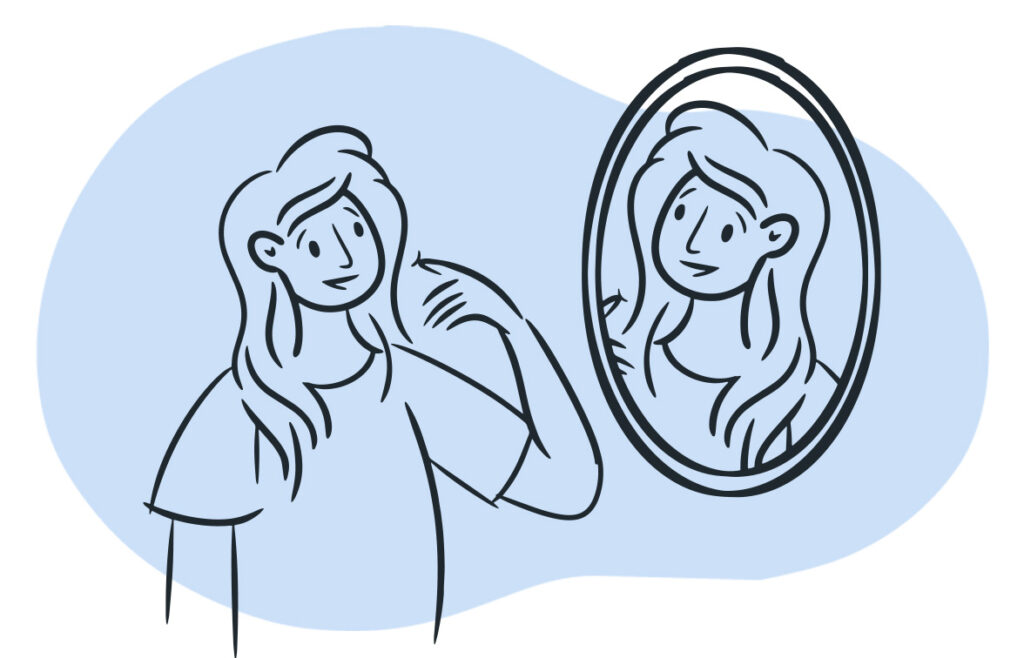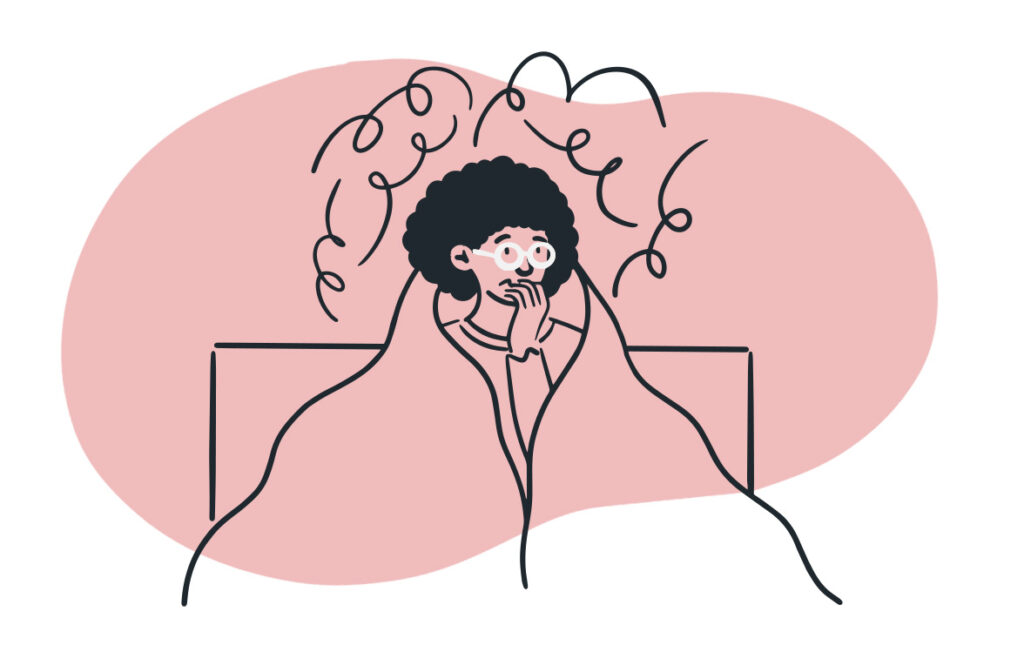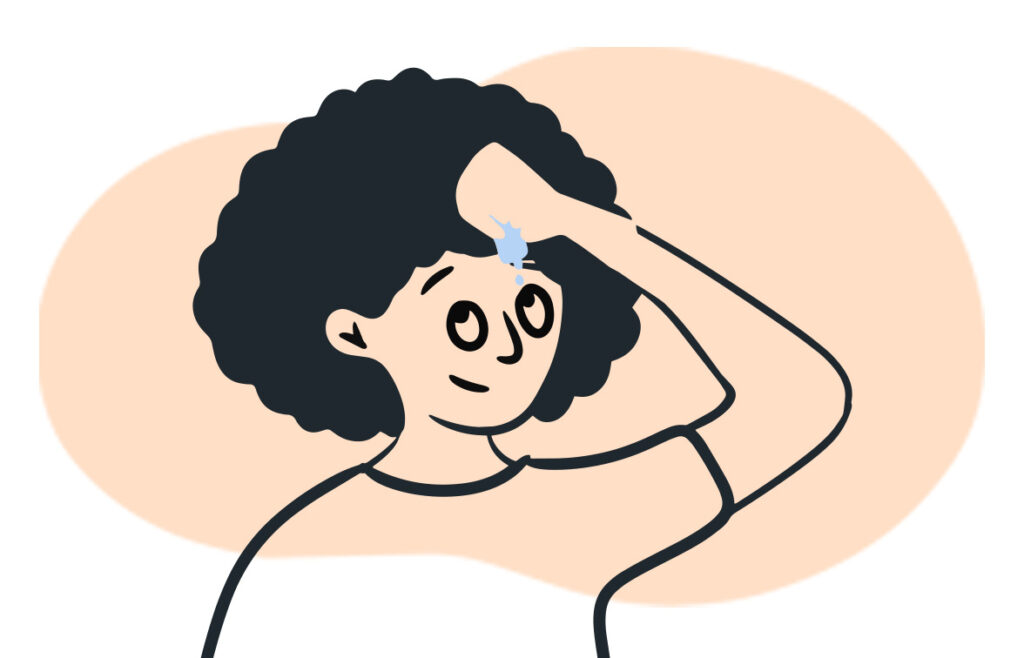Can You Sleep With Contacts In?
Disclosure: By clicking on the product links in this article, Mattress Nerd may receive a commission fee at no cost to you, the reader. Read full disclosure statement.
Medically reviewed by Dr. Diane Hilal-Campo, a board-certified ophthalmologist and founder of twenty/twenty beauty, and Dr. Matthew Geller, OD, an optometrist and CEO of Eyes on Eyecare.
We’ve all been there before—exhausted after a long day, all you want to do is collapse into bed and skip your typical nighttime routine.
Forgetting to take out your contacts seems like no big deal in the moment, but our eyes are sensitive, complex organs that don’t take much to throw off balance. A seemingly harmless decision to hit the hay with your contacts in can actually put you (and your vision) at risk of some serious consequences.
Let’s break down everything that can go wrong when you sleep with contacts in, from the relatively harmless to the potentially vision-threatening. Read on to learn more about why it’s always best to take out your contact lenses before dozing off.

Is It Bad To Sleep With Contacts In?
With approximately 45 million people in the U.S wearing soft or gas permeable contact lenses, it’s important to know how to properly take care of them—and that includes following this cardinal rule: never sleep in your lenses.
Even if they’re technically “approved” for sleep, wearing contacts to bed can lead to serious eye infections that can cause permanent vision damage or even blindness. In fact, you’re eight times more likely to get an eye infection if you sleep in your lenses. And yep, even a 20-minute cat nap counts.
Proteins created by your eyes as well as bacteria from your skin, makeup, and environment all build up on your lenses throughout the day. Since 80-90 percent of eye infections caused by contact lenses are bacterial, maintaining good contact lens hygiene is crucial. That means washing your hands before you handle your lenses and giving your eyes a break when you go to bed.
Beyond the infectious implications of sleeping with your lenses in, taking a break is critical for oxygen flow to your eyes. Your corneas don’t produce their own oxygen, and do not have blood vessels to supply oxygen and nutrients. Without these nutrients your corneas can get twisted and scarred which will affect your vision. Failure to take a break from wearing lenses, including overnight, could lead to lasting damage to your corneas and long-term reduction in your vision.

What Happens If You Sleep With Contacts In?
Anyone who’s accidentally slept with contact lenses in will tell you: waking up is no fun. What you experience the next day could be any of the following:
- Watery eyes
- Tears
- Redness
- Itchiness
- Dryness
- Light sensitivity
- Decreased vision
- Discomfort
- Pain
But that’s just the surface-level stuff. Sleeping in contacts puts you at risk for various levels of inflammation along with a whole host of infections that range from annoying to downright dangerous:
- Giant papillary conjunctivitis: An inflammatory response of the inner eyelid that can cause redness, itching, and discomfort in the form of small bumps underneath your eyelids.
- Corneal abrasion: When you sleep with contacts in, your cornea—the clear outer layer of your eye—can become scratched. This can cause pain, redness, decreased vision, tearing, and light sensitivity.
- Corneal ulcer: A corneal ulcer is an open sore on your eye caused by bacteria (and fungi, but not as common) that can lead to vision loss if left untreated. This condition can be located from the edge to the center part of the cornea—if large enough, it can be visible to the naked eye. Symptoms might include sudden decrease in vision, significant redness of the entire eye, pain, and light sensitivity.
- Infiltrative keratitis: An inflammatory response that usually occurs towards the edge of the cornea. Depending on severity, symptoms might include mild to moderate discomfort, redness that traces to the location of the corneal infiltrate, decreased vision, tearing, and light sensitivity.
- Bacterial keratitis: An infection of the cornea that can cause scarring, which can impact your vision. Severe cases may require a corneal transplant to potentially improve eyesight for daily and work-related activities.
- Acanthamoeba keratitis: This rare but serious infection is caused by a type of amoeba that can lead to blindness. Symptoms include intense eye pain, light sensitivity, blurred vision, and redness.
You may also face infection by “losing” your contact lenses in your eyes, far back behind the upper lid. While one unintended night of sleeping in your contacts won’t likely cause any long-term damage, developing a bad habit of it can put your vision at serious risk.

How to Treat Eyes After Sleeping with Contacts
If you’ve dozed off in your contacts, know that you’re not alone. One report found that sleeping or napping in contact lenses is one of the most common risky behaviors for people who wear them.
So if you do accidentally find yourself waking up with contacts in, don’t fret. Just take a deep breath and follow these simple steps:
- Don’t wait. The sooner you get them out, the better.
- Add some lubricating drops to your eyes first. They’ll likely be super dry, and this will help prevent any injury to your cornea during removal.
- Wash your hands thoroughly with soap and water.
- Remove the lenses gently, being careful not to rub your eyes in the process. If they seem stuck or partially torn, don’t force them out. Letting them rewet for a few minutes with lubricating drops can help them release from your eyes. If they’re still stuck, seek professional help.
Tips for Good Contact Lens Hygiene
Needless to say, the best way to avoid all of this scariness is to take good care of your lenses, and thus your eyes, in the process. Practicing proper contact lens hygiene can go a long way in preventing infection.
Here are some tips for healthy contact lens wear:
- Always wash your hands before touching your eyes. We unknowingly pick up so much bacteria during the day, and you don’t want any of that transferred to your lenses.
- Don’t substitute tap water for contact lens solution. Microparticles from the water can cause irritation and are likely to contain bacteria.
- Remove any debris from your contacts by gently rubbing them with contact lens solution and your clean fingers and then rinsing them once again with solution.
- Store your lenses in a clean case with fresh solution every single day—no exceptions. Using daily contact lenses makes this especially simple, as throwing out your lenses at the end of the day will go a long way in helping you avoid infection caused by unclean lenses.
- Replace your cases at least every three to four months.
- Follow the RSVP rule: If you have redness, sensitivity to light, vision decrease, and pain/discomfort, this warrants immediate medical attention with an eye care professional (optometrist or ophthalmologist).
- Don’t wear contact lenses in the shower—the steam can cause lenses to dry out and irritate or harm the eyes.
Final Thoughts
No matter how tempting it may be to just crash after a long day, it’s never a good idea to sleep in your contacts. Not only will you wake up with dry, irritated eyes, but you could also be putting your vision at risk for serious infection. Next time you’re feeling sleepy, make sure to take your lenses out before you hit the hay.
FAQs
How long can you sleep with contacts in?
Zero minutes. Sleeping with contacts in even for just a short nap, is a no-no. Take them out before you get your shut-eye.
Are there contacts you can sleep in?
Even contacts that are supposedly “approved” for sleep, likely should not be worn overnight based on the potential risks mentioned above.
Can you nap with contacts in?
Not recommended—napping with contacts in can be just as dangerous as sleeping a full night with them in. Stay on top of your game and take them out before you take a nap, no matter how short.
Can you shower with contacts?
Absolutely not—you shouldn’t expose your contacts to water of any kind. That includes showering, as well as steam such as from a sauna. The heat and steam can distort the lenses as well as make the eyes feel dry, causing irritation.
Sources
Boyd K. (2021). Eye Infections From Contact Lenses. https://www.aao.org/eye-health/diseases/contact-lens-related-eye-infections
Centers for Disease Control and Prevention. (2010). Acanthamoeba Keratitis FAQs. https://www.cdc.gov/parasites/acanthamoeba/gen_info/acanthamoeba_keratitis.html
Centers for Disease Control and Prevention. (2021). Contact Lenses: Fast Facts. https://www.cdc.gov/contactlenses/fast-facts.html
Centers for Disease Control and Prevention. (2021). Contact Lenses: Other Complications. https://www.cdc.gov/contactlenses/other-complications.html
Centers for Disease Control and Prevention. (2021). Contact Lenses: Protect Your Eyes. https://www.cdc.gov/contactlenses/protect-your-eyes.html
Cleveland Clinic. (2020). Avoid These Eye Infections From Bad Contact Lens Habits. https://health.clevelandclinic.org/avoid-eye-infections-bad-contact-lens-habits/
Cope J., et al. (2017). Risk Behaviors for Contact Lens–Related Eye Infections Among Adults and Adolescents. https://www.cdc.gov/mmwr/volumes/66/wr/mm6632a2.htm?
Penn Medicine. (2020). Corneal Ulcer. https://www.pennmedicine.org/for-patients-and-visitors/patient-information/conditions-treated-a-to-z/corneal-ulcer
Steele KR, Szczotka-Flynn L. Epidemiology of contact lens induced infiltrates: An updated review. Clinical and Experimental Optometry. 2017;100(5):473-481. https://onlinelibrary.wiley.com/doi/full/10.1111/cxo.12598